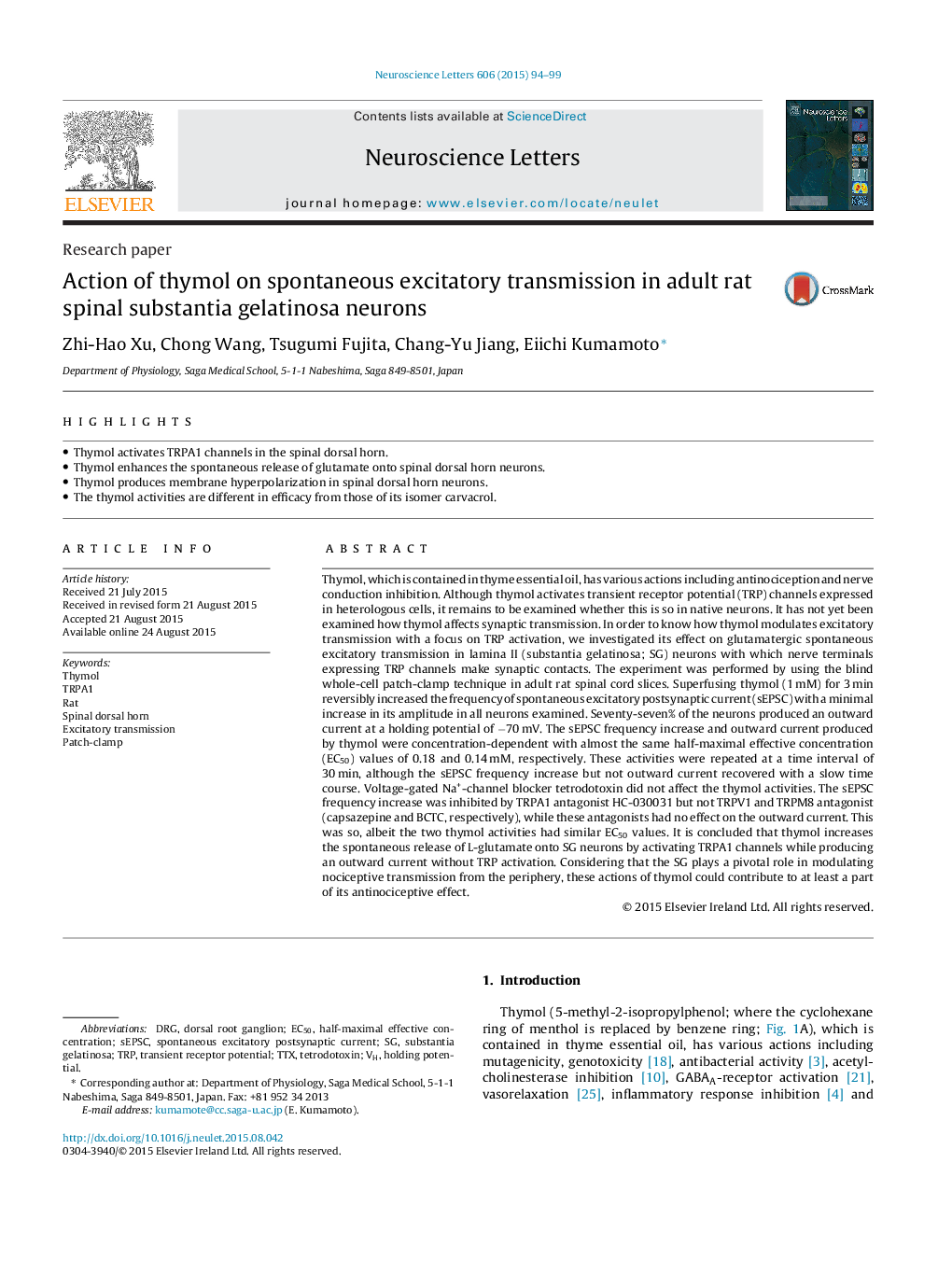| کد مقاله | کد نشریه | سال انتشار | مقاله انگلیسی | نسخه تمام متن |
|---|---|---|---|---|
| 6280512 | 1615093 | 2015 | 6 صفحه PDF | دانلود رایگان |
- Thymol activates TRPA1 channels in the spinal dorsal horn.
- Thymol enhances the spontaneous release of glutamate onto spinal dorsal horn neurons.
- Thymol produces membrane hyperpolarization in spinal dorsal horn neurons.
- The thymol activities are different in efficacy from those of its isomer carvacrol.
Thymol, which is contained in thyme essential oil, has various actions including antinociception and nerve conduction inhibition. Although thymol activates transient receptor potential (TRP) channels expressed in heterologous cells, it remains to be examined whether this is so in native neurons. It has not yet been examined how thymol affects synaptic transmission. In order to know how thymol modulates excitatory transmission with a focus on TRP activation, we investigated its effect on glutamatergic spontaneous excitatory transmission in lamina II (substantia gelatinosa; SG) neurons with which nerve terminals expressing TRP channels make synaptic contacts. The experiment was performed by using the blind whole-cell patch-clamp technique in adult rat spinal cord slices. Superfusing thymol (1Â mM) for 3Â min reversibly increased the frequency of spontaneous excitatory postsynaptic current (sEPSC) with a minimal increase in its amplitude in all neurons examined. Seventy-seven% of the neurons produced an outward current at a holding potential of â70Â mV. The sEPSC frequency increase and outward current produced by thymol were concentration-dependent with almost the same half-maximal effective concentration (EC50) values of 0.18 and 0.14Â mM, respectively. These activities were repeated at a time interval of 30Â min, although the sEPSC frequency increase but not outward current recovered with a slow time course. Voltage-gated Na+-channel blocker tetrodotoxin did not affect the thymol activities. The sEPSC frequency increase was inhibited by TRPA1 antagonist HC-030031 but not TRPV1 and TRPM8 antagonist (capsazepine and BCTC, respectively), while these antagonists had no effect on the outward current. This was so, albeit the two thymol activities had similar EC50 values. It is concluded that thymol increases the spontaneous release of L-glutamate onto SG neurons by activating TRPA1 channels while producing an outward current without TRP activation. Considering that the SG plays a pivotal role in modulating nociceptive transmission from the periphery, these actions of thymol could contribute to at least a part of its antinociceptive effect.
Journal: Neuroscience Letters - Volume 606, 8 October 2015, Pages 94-99
